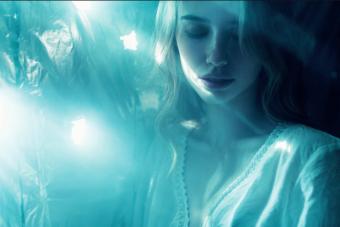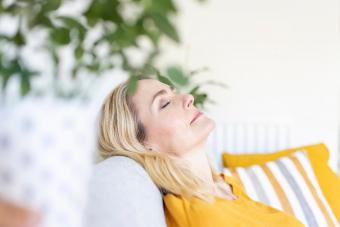
Twitching while sleeping can disrupt sleep and it can be a sign of a sleep disorder. What causes the twitches and what can be done about them?
What Is Twitching?
Twitching or jerking is involuntary, sudden movements that can occur anytime, including while a person is sleeping. The movements may be temporary and they may require no treatment; but, in some cases, the involuntary movements can be a sign of a medical problem. Several medical conditions can lead to involuntary twitching while sleeping and it helps to recognize the type of twitch in order to track back to the possible cause.
Types of Twitches
The problem with defining a twitch is the experience is difficult to describe; this can make pinpointing the condition challenging. One person may say that they are twitching or jerking during sleep when they are having muscle spasms. Some may be describing tics when they are talking about the involuntary movements. It is necessary to identify the source of the movements in order to treat the condition properly.
- Convulsions are involuntary spasms synonymous with seizures.
- Muscle spasms are involuntary muscle contractions that can lead to cramping. Leg cramps during sleep are a common problem that may not require treatment but it is important to tell a physician about the nighttime spasms.
- Myoclonus are involuntary movements that may be caused by sudden tensing or sudden relaxation of a muscle or group of muscles.
- Tics are repetitive movements that are spontaneous and intermittent. Tics tend to be concentrated in certain areas, namely the face, hands, trunk, neck and shoulders.
- Tremors are gentler than convulsions, spasms and tics. These involuntary movements are rhythmic trembling motions that have many possible causes.
Involuntary twitches can be troublesome while a person is awake and the problem can interfere with sleeping patterns in some cases. What causes sleep twitches?
Causes of Twitching While Sleeping
Identifying the type of twitching occurs during sleep is important because it can help the patient find a viable solution to the problem. While countless causes of twitches exist, a few stand out in relation to sleep. Some may find that simply changing their bedtime routine can alleviate the symptoms, especially if the twitching is caused by alcohol or medication.
Sleep Myoclonus
Sleep myoclonus happens at the onset of sleep and it is a problem in the first stage of sleeping. Many can relate to feeling as if they are falling right as they are drifting off, leading to an urge to "catch" themselves. The sudden jolt of movement immediately awakens the person, which makes the experience jarring, if not disturbing. Some may find it difficult to fall asleep afterwards. In some cases, recurring sleep myoclonus can be a sign of an underlying medical condition or sleep disorder.
Mothers of newborn babies are often acutely attuned to the slightest hints that anything might be wrong with their babies. It's understandable, then, that a mother who observes who newborn child's limbs jerking may worry that her child is having seizures due to some serious neurological condition. However, according to a study published in the British Medical Journal, benign sleep myoclonus usually resolves itself by the time a child is three months old. This spontaneous resolution occurs because of the natural maturation of a baby's sleep cycles at around 12 weeks old.
Periodic Limb Movement Disorder
Periodic limb movement disorder (PLMD) is a sleep disorder that involves jerking movements that last about 30 seconds. The twitching during sleep is rhythmic and it disrupts sleep. Patients who have PLMD may experience fatigue during the day even though they may not wake every time the jerking movements occur.
Many people who have PLMS are not aware of it, and the disorder is most often first recognized by a bed partner. Movements are small, and may involve flexing of the big toe or a bend of the knee, hip, or ankle. If the movements are sudden and severe, they may disrupt sleep enough to cause excessive daytime sleepiness, memory problems, or even depression due to sleep deprivation. If the movements do not interfere with a person's sleep or waking life, they are not considered a sleep disorder and do not require treatment.
To diagnose PLMS, a doctor would prescribe a sleep study, or polysomnogram. A polysomnogram involves an overnight stay in a sleep lab. Specialized instruments and lab technicians monitor sleep patterns, body movements, and brain waves, and a doctor uses the results of the sleep study to diagnose sleep disorders definitively. For PLMS, doctors may prescribe anti-seizure medications, sleeping pills, or narcotic painkillers, the same drugs that are used to treat restless leg syndrome.
Interestingly, PLMS affects up to 34 percent of people over 60 and is commonly found in people who have other sleep disorders like narcolepsy, restless leg syndrome, or REM sleep behavior disorder. Some medications such as lithium, certain anti-nausea medicines, and some anti-depressants may cause or exacerbate PLMS, so it's important to keep track of any changes in medication to help doctors accurately diagnose the reason for the PLMS.
Restless Leg Syndrome
Restless leg syndrome is a sleep disorder that can lead to twitching while sleeping. The movements occur because the sleeper has a strong urge to move because of unpleasant creeping sensations in the legs.
REM Behavior Disorder
REM behavior disorder prevents the sleeper from experiencing sleep paralysis during the REM cycle. During the REM cycle, the sleeper is usually unable to move. This prevents him from acting out his dreams during sleep. The condition can lead to sudden, involuntary movements that may be described as twitches, but the movements can be vigorous and far less subtle.
Treating Sleep Twitching
A critical step in treating any sleep problem is to consult a physician. In some situations, it may be necessary to participate in a sleep study to pinpoint the specific problem. During a sleep study, technicians use devices that measure body movements, including subtle twitches. The study can help determine the cause of the sudden movements and appropriate treatment follows according to the cause. In some cases, the movements stop and no treatment is necessary.
Interventions may include:
- Exercises
- Leg cramp treatments
- Treating restless leg syndrome
- Sleep tips
Treating underlying medical problems may naturally lead to relief and a doctor may suggest treatments for the involuntary movements. If jerking in sleep is a recurring problem that interferes with the ability to get enough sleep, it is important to talk to a physician about the disturbances.







